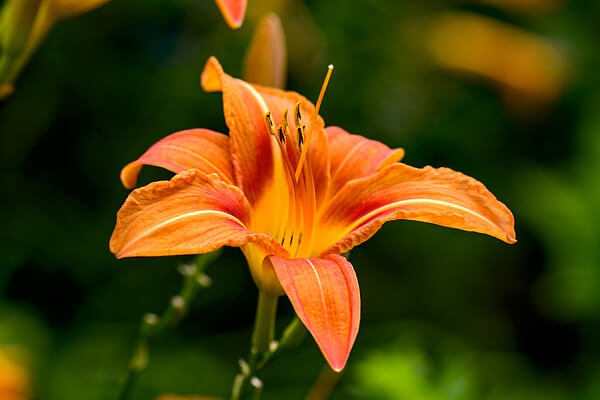Daylilies are perennial flowers. Originally, they were dormant throughout the winter months. Nowadays, however, there are cultivars that are evergreen and semi-evergreen. Some species are edible and are used in Chinese cuisine. Daylilies are easy to grow, hardy, have strong resistance to pest and diseases, and have different colors and shapes. They can be used for cut flower arrangements.
Planting Daylilies
- Locate a site with full sun whenever possible, or at least one with just partial shade. With daylilies, they are at their blooming best when they have direct sun for at least six hours every day.
- Prior to planting, plow the soil deeply and work in well-rotted manure and other compost. If possible, get a soil test and enhance the soil according to the test results.
- Locate the crown – the band of white on the foliage, where the top and the roots join – using that as your marker. Gently loosen the roots, and plant the daylilies so that the crowns are not any deeper than one inch below the surface. Cut back the foliage to about six inches.
- For transplanting container daylilies, first loosen the roots a little bit and plant the daylilies in the same depth as they were in the containers.
- Use your hands to gently firm the surface of the soil.
- Water the daylilies thoroughly after planting, and once weekly for the next six to eight weeks until established. Watering the daylilies consistently will reward you with better blooms.
Dividing the Daylilies
It helps rejuvenate outgrown daylilies when they are divided. This can be done in the spring or during the late summer to early autumn.
Advantages to Division in the Spring
- In the spring, the stems or fans of leaves forming the clump can be easily seen
- A lot of the leaves are still small averting much water loss and helping the roots to re-grow
- Due to the moisture received during the winter season, transplanting is easier and it also reduces the daylilies’ requirement for water.
When Dividing Daylilies in Late Summer or Early Autumn
By this time, the summer flowering is finished, and the daylilies’ energy is directed toward new roots. For colder climates, remember that your plants require at least six weeks to get settled. Thus, it is not advisable to wait too long to divide the daylilies.









Plow the soil? On a balcony? And the photo is an oriental lily, not a daylily. What a sorry site!
Hmm, no I wouldn’t recommend attempting to plow soil on your balcony, unless it’s a really big balcony! Thanks for pointing out I’d used the wrong image – I’ve fixed it.
What are those brown things on the stem of lillies? I’m thinking seeds?